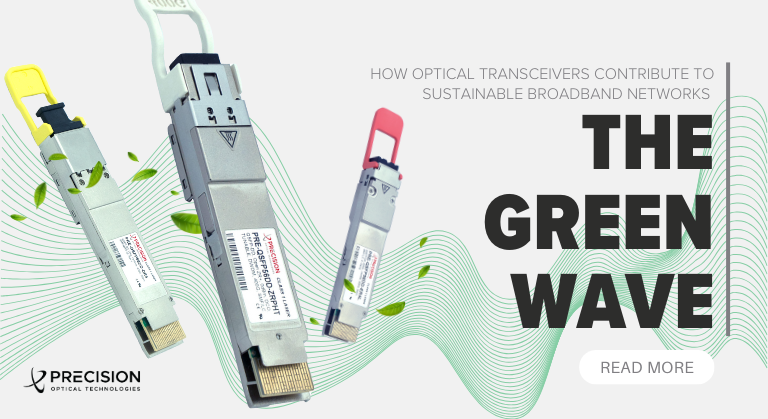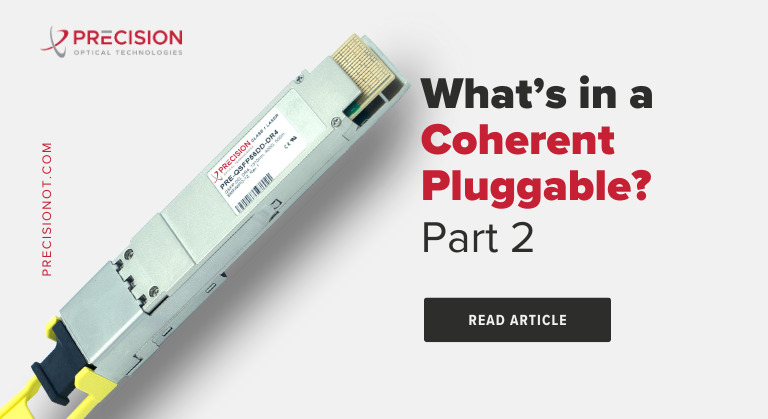
The Power of PON: Revolutionizing Rural Telecom Connectivity

In a previous blog, we talked about the worldwide focus on closing the digital divide, noting that network operators were mainly turning to two types of network architectures: Fiber-to-the-Home (FTTH) and Metro Ethernet. As with everything, however, a clear trend has emerged. Network operators are increasingly turning to Passive Optical Network (PON) technology as they look to deliver fiber-based connectivity to rural communities.
But there’s a challenge. From vendor-lock and long lead times to configuration and systems integration challenges, much can hinder the network operator’s ability to deploy or upgrade PON networks in the most efficient way possible. But now, the market is shifting in favor of network operators. Here’s how.
Bridging the Digital Divide: Why Network Operators Continue to Choose PON
As the president and CEO of the Fiber Broadband Association wrote in Broadband Technology Report, network operators, including cable operators of all sizes, are turning to fiber as the top choice for connecting unserved and underserved households in the U.S. This trend is not just occurring domestically, however.
Across the EU and APAC regions, FTTH subscriptions will continue to grow. As the Prysmian Group notes, 82 million American households will enjoy FTTH services by 2027, which is nearly double the figure today. As well, FTTH’s share of the U.S. broadband market will grow from 14% to 26% in the same amount of time. In the APAC region, FTTH services will quickly become the leading fixed broadband technology, accounting for 94.8% of the region’s total fixed broadband service revenue. In Western Europe, by 2025, FTTH/P fiber will overtake xDSL with a 40.7% market share. Light Reading’s Heavy Reading Fall 2022 study found that 87% of network operators indicated that they plan to use FTTP networks to bridge the digital gap in their areas of service.
For these kinds of network deployments, Passive Optical Network (PON) technologies have emerged as an optimal solution. By using passive optical components and point-to-multipoint topology, PON networks allow multiple subscribers to share the same fiber infrastructure, reducing deployment and maintenance costs. This makes it more cost-effective for bridging digital divides than, for example, Metro Ethernet or other technologies, which require costlier active networking equipment. Moreover, PON networks offer high bandwidth capabilities, making them well-suited for the increasingly bandwidth-intensive demands of digital life (and for meeting the requirements of various governmental programs like RDOF, BEAD, etc.) There’s also a sustainability angle at play too: PON networks are beginning to emerge as a “low-carbon optical network option”, helping network operators reduce energy consumption with new or expanded deployments. It’s no wonder then that the PON equipment market will continue to grow at a CAGR of 14.3% through 2028, reaching a total value of approximately $14.63 billion.
From G-PON to XGS-PON: Opportunities and Benefits
When it comes to PON technologies, symmetrical 10G PON (XGS-PON) is quickly becoming a popular choice for forward-thinking network operators. While GPON features asymmetrical downstream and upstream rates of just 2.5 Gb/s and 1 Gb/s respectively, XGS-PON tops that with symmetrical rates of 10 Gb/s.
This makes XGS-PON ideal for bridging the digital divide in regions where ultra-high-speed connectivity is essential now or into the future. In rural areas where there is growing demand for advanced applications like telemedicine, high-definition video conferencing, and data-intensive cloud services, XGS-PON can ensure seamless and reliable connectivity. Because it can support 4G and 5G mobile transport alongside residential/business broadband, it’s also a good solution for converged network operators to maximize cost savings and efficiency. It’s no wonder then that Dell’Oro analysts believe XGS-PON will become the dominant technology across residential FTTH networks.
Overcoming Obstacles on the Road to Bridging the Digital Divide
Despite the interest in PON deployments (especially XGS-PON), network operators face several challenges when procuring the necessary components. Vendor-lock is a common concern. Because many turnkey solutions on the market today are closed and proprietary, operators can quickly become dependent on a single vendor’s ecosystem for equipment and support. When flexibility is limited, capital and operating costs often go up. Vendor-lock can also hinder a network operator’s ability to adapt and upgrade to future PON technologies as needed. Lead times for procuring PON components in vendor-lock scenarios can also be problematic, as delays in equipment delivery can hinder project timelines, extending the wait for much-needed broadband access in underserved communities.
System integration presents another key challenge, as any purchased PON components must seamlessly fit into the operator’s existing network infrastructure. Accomplishing this often requires additional, in-depth technical expertise that a single vendor may not be able to provide.
OpenPath™: The Answer to Simple, Efficient, Innovative PON Adoption
Enter OpenPath™. It is a comprehensive, turnkey solution that encompasses all the critical components of a PON network, including OLTs, optics, splitters, ONUs, and cutting-edge controller software. Initially supporting XGS-PON, this transformative solution provides MSOs, service providers or any access network operator with unmatched ease, flexibility, and efficiency in deploying and managing PON networks.
Where some vendors offer only closed, proprietary solutions, OpenPath™ leverages a white box hardware model, which supports the integration of a diverse array of ONUs and ONTs. In essence, it eliminates vendor-lock, making it faster and simpler for network operators to acquire, deploy, and manage the equipment they need. OpenPath™’s user-friendly system management software enables users to bring all their components together to ensure optimal performance. Most importantly, it is interoperable with many existing software systems they may have.
By embracing a more open PON ecosystem, we’re working to help network operators avoid costly vendor-lock scenarios while supporting them every step of the way with our deep-seated technical and systems integration expertise. It’s now easy and simple for them to procure all the PON equipment they need while being confident that they’re architecting a deployment that is efficient, flexible, and reliable. Because OpenPath™ enables users to converge services (residential, commercial, wireless) over a single infrastructure and reuse existing ODN/passive resources, it presents a cost-effective alternative to other market offerings. Most importantly, OpenPath™ gives network operators the flexibility to leverage additional form factors and future PON technologies – it’s really the optimal solution for forward-thinking network operators.
Are you working on a PON deployment? Are you considering your options and looking to maximize ROI over the long-haul? Contact us with your questions. We’d be happy to answer and demonstrate our breakthrough solution to you.






